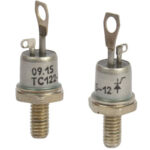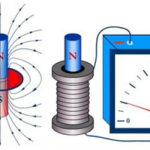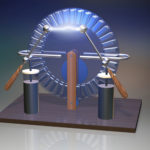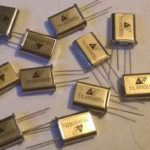The piezoelectric effect was discovered by French scientists, the Curie brothers, at the end of the 19th century. At that time, it was too early to talk about the practical application of the discovered phenomenon, but today piezoelectric elements are widely used both in engineering and in everyday life.
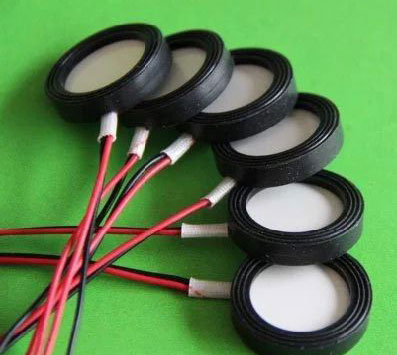
Contents
The essence of piezo effect
Well-known physicists found that when certain crystals (rock crystal, tourmaline, etc.) are deformed on their facets electrical charges arise. The potential difference was insignificant, but the existing at that time devices fixed it, and by connecting the parts with opposite charges with the help of conductors it was possible to receive an electric current.. The phenomenon was recorded only in dynamics, at the moment of compression or stretching. Static deformation did not cause the piezo effect.
Soon the opposite effect was theoretically substantiated and discovered in practice - when voltage was applied, the crystal deformed. It turned out that the two phenomena are interrelated - if a substance exhibits the direct piezo effect, it also exhibits the inverse effect, and vice versa.
The phenomenon is observed in substances with an anisotropic crystal lattice (which have different physical properties depending on the direction) with sufficient asymmetry, as well as some polycrystalline structures.
In any solid body, the applied external forces cause deformation and mechanical stresses, and in substances possessing the piezo effect also polarization of charges, and the polarization depends on the direction of the applied force. When the direction of influence changes, both the direction of polarization and the polarity of the charges change. The dependence of polarization on the mechanical voltage is linear and is described by the expression P=dt, where t is the mechanical voltage and d is a coefficient called the piezoelectric modulus (piezomodulus).
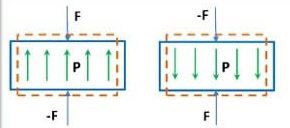
A similar phenomenon occurs with the inverse piezo effect. When the direction of the applied electric field changes, the direction of deformation changes. Here the dependence is also linear: r=dE, where E is the electric field strength and r is the strain. The coefficient d is the same for direct and reverse piezo effect in all substances.

In fact, these equations are only estimates. The actual dependencies are much more complicated and are also determined by the direction of the forces relative to the crystal axes.
Substances with the piezo effect
The piezo effect was first found in crystals of rock crystal (quartz). To this day this material is very common in the manufacture of piezoelectric elements, but not only natural materials are used in production.
Many piezoelectric elements are based on materials with the formula ABO3formula, such as BaTiO3, PbTiO3. These materials have a polycrystalline (consisting of many crystals) structure, and to give them the ability to exhibit piezo effect they must be subjected to polarization by means of an external electric field.
There are technologies that make it possible to obtain film piezoelectrics (polyvinylidene fluoride, etc.). To give them the necessary properties, they must also be polarized in an electric field for a long time. The advantage of such materials is their very small thickness.
Properties and characteristics of substances with the piezo effect
Since polarization only occurs during elastic deformation, an important characteristic of a piezomaterial is its ability to change shape under the action of external forces. The value of this ability is determined by the elastic compliance (or elastic stiffness).
Crystals with the piezo effect have a high elasticity - when the force (or external stress) is removed, they return to their original shape.
Piezo crystals also have an intrinsic mechanical resonance frequency. If the crystal is forced to oscillate at this frequency, the amplitude will be particularly large.
Since not only whole crystals exhibit the piezo effect but also plates of them cut under certain conditions, it is possible to obtain pieces of piezoelectric material with resonance at different frequencies - depending on the geometric dimensions and the direction of the cut.
The mechanical quality factor also characterizes the vibrational properties of piezoelectric materials. It indicates by how many times the vibration amplitude increases at the resonant frequency for an equal applied force.
There is a clear dependence of piezoelectric properties on temperature, which must be taken into account when using crystals. This dependence is characterized by coefficients:
- temperature coefficient of resonant frequency shows how much the resonance goes away when the crystal is heated/cooled;
- temperature coefficient of expansion determines how much the linear dimensions of the piezo wafer change with temperature.
At a certain temperature, the piezocrystal loses its properties. This limit is called the Curie temperature. This limit is individual for each material. For example, for quartz it is +573 °C.
Practical Use of the Piezo Effect
The best known use of piezo cells is as an ignition element. The piezo effect is used in pocket lighters or in kitchen igniters for gas stoves. When the crystal is pressed, a potential difference is created and a spark appears in the air gap.
This is not the end of the field of application of piezoelectric elements. Crystals with a similar effect can be used as strain sensors, but this field of application is limited by the property of the piezo effect to appear only in dynamics - if the changes have stopped, the signal stops being generated.
Piezo crystals can be used as a microphone - when exposed to acoustic waves electrical signals are generated. The inverse piezo effect also allows (sometimes simultaneously) such elements to be used as sound emitters. When an electrical signal is applied to the crystal, the piezo element will begin to generate acoustic waves.
Such emitters are widely used to create ultrasonic waves, particularly in medical technology. At at resonance properties of the plate can also be used. It can be used as an acoustic filter that emits waves of its own frequency only. Another option is to use in a sound generator (siren, detector, etc.) a piezo element simultaneously as a frequency transducer and a sound emitter. In this case the sound will always be generated at the resonant frequency, and maximum volume can be obtained with little energy consumption.

Resonance properties are used to stabilize frequencies of oscillators operating in the radio frequency range. Quartz plates act as highly stable and high quality oscillating circuits in frequency-retaining circuits.
So far, there are fantastic projects to convert the energy of elastic deformation into electrical energy on an industrial scale. You can use the deformation of the pavement by the gravity of pedestrians or cars, for example, to light sections of highways. It is possible to use the deformation energy of airplane wings to provide onboard power. Such use is constrained by insufficient efficiency of piezo cells, but pilot installations have already been created, and they have shown promise for further improvement.
Related articles:

